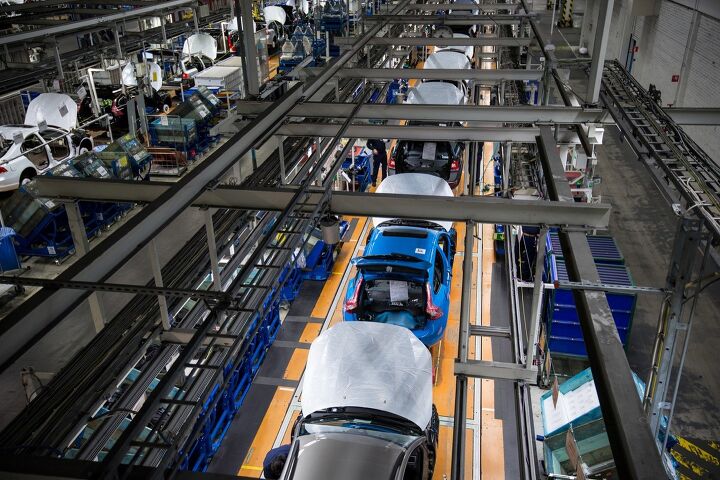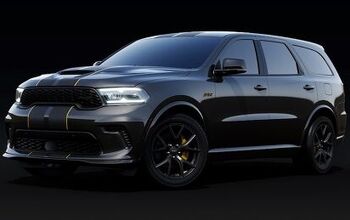Volvo Doubles South Carolina Investment, Pours In Another $500 Million, Plans Two Production Lines
Volvo continues to look forward to real U.S. sales recovery, meeting the goal of record U.S. sales volume by 2020, and a fourth consecutive year of record global sales. To get there, Volvo is already altering plans at the Charleston, South Carolina, assembly plant where construction is already in full swing.
Altering? According to Reuters and Charleston’s Post and Courier, it’s more like deciding that the plant should be twice as large, build twice as many vehicles, house more than twice as many employees, and cost twice as much.
Volvo was already going in the process of investing $500 million to build a South Carolina plant that will likely be responsible for assembling the next-generation Volvo S60. (The second-gen S60 is entering its eighth model year.) It’s been more than two years since Volvo announced South Carolina as the designated spot for the Chinese-owned Swedish automaker’s first North American facility since Volvo left Nova Scotia in 1998.
But with the first S60 in line to kickstart actual production in the summer of 2018, Volvo is reportedly going to add a production line — at a cost of another $500 million, bolstered by $3.5 million in government incentives — in order to increase the workforce from 2,000 to 4,500. Theoretically, the design of Volvo’s new architecture means any of the brand’s models could be built on the new line. Volvo expects 60 percent of its South Carolina production to be exported, The Post and Courier reports.
South Carolina is also home to production of four BMW utility vehicles. Through the first eight months of 2017, according to Automotive News, BMW’s Spartanburg, South Carolina, production accounts for 3 percent of total U.S. auto production. Mercedes-Benz also re-builds Metris and Sprinter vans in Ladson, South Carolina, at a rate of roughly 3,700 units per month.
Volvo has not yet confirmed its intentions for a double-sized South Carolina investment, nor the second vehicle intended to consume factory space.
[Images: Volvo]
Timothy Cain is a contributing analyst at The Truth About Cars and Autofocus.ca and the founder and former editor of GoodCarBadCar.net. Follow on Twitter @timcaincars and Instagram.
More by Timothy Cain
Latest Car Reviews
Read moreLatest Product Reviews
Read moreRecent Comments
- Namesakeone If I were the parent of a teenage daughter, I would want her in an H1 Hummer. It would be big enough to protect her in a crash, too big for her to afford the fuel (and thus keep her home), big enough to intimidate her in a parallel-parking situation (and thus keep her home), and the transmission tunnel would prevent backseat sex.If I were the parent of a teenage son, I would want him to have, for his first wheeled transportation...a ride-on lawnmower. For obvious reasons.
- ToolGuy If I were a teen under the tutelage of one of the B&B, I think it would make perfect sense to jump straight into one of those "forever cars"... see then I could drive it forever and not have to worry about ever replacing it. This plan seems flawless, doesn't it?
- Rover Sig A short cab pickup truck, F150 or C/K-1500 or Ram, preferably a 6 cyl. These have no room for more than one or two passengers (USAA stats show biggest factor in teenage accidents is a vehicle full of kids) and no back seat (common sense tells you what back seats are used for). In a full-size pickup truck, the inevitable teenage accident is more survivable. Second choice would be an old full-size car, but these have all but disappeared from the used car lots. The "cute small car" is a death trap.
- W Conrad Sure every technology has some environmental impact, but those stuck in fossil fuel land are just not seeing the future of EV's makes sense. Rather than making EV's even better, these automakers are sticking with what they know. It will mean their end.
- Add Lightness A simple to fix, strong, 3 pedal car that has been tenderized on every corner.



































Comments
Join the conversation
Could someone explain why Volvo would choose to expand in South Carolina when there are equal subsidies and a more experienced workforce available in Ontario or Michigan?
I'm conflicted on this one. I spent over a decade living just outside of Charleston (Summerville) and still consider that my "home" and where my wife and I intend on retiring, should that day ever come. While part of me loves the fact that more Charlestonians are getting the opportunity to find work, the Chinese connection irks me as we continue to stare down $300 billion+ deficits with them year over year over year. Maybe I should be happy that some of that money is being reinvested in the US and leave it at that...